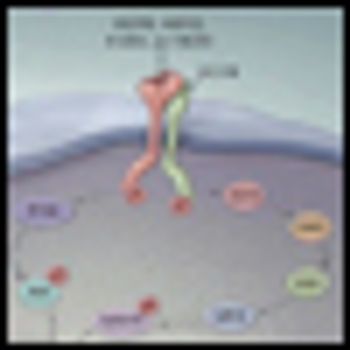
I see a time in the not too distant future when we’ll define tumors this way. What will our subspecialties be? Rather than a breast clinic or a lung clinic, will we perhaps be attending a “HER2 clinic” or an “mTOR clinic” instead?

Your AI-Trained Oncology Knowledge Connection!


I see a time in the not too distant future when we’ll define tumors this way. What will our subspecialties be? Rather than a breast clinic or a lung clinic, will we perhaps be attending a “HER2 clinic” or an “mTOR clinic” instead?

Work remains in the development of a clinically useful tumor classification system that includes molecular characterization of tumors, in our understanding of the implications of tumor heterogeneity, and in the development of more relevant and efficient clinical trials. Nonetheless, there is great excitement that a new era in the treatment of cancer is beginning.

This second article in our two-part series on targeted therapies in solid tumors covers the emergence of targeted therapies for the treatment of two common malignancies: lung cancer and breast cancer.

Most cases the clinical management of CLL patients with del(17p13.1) poses enormous challenges, and patients should be included in clinical trials whenever possible. However, there are a number of promising novel drugs and immunotherapy strategies under investigation.

It is easy to anticipate that as the complex biology of CLL continues to unfold, new prognostic and predictive biomarkers will be recognized. The discovery of genetic mutations that are key regulators of the development, growth, and proliferation of CLL leukemic cells augurs an alluring future.

Of particular relevance for clinicians is the possible recommendation of omitting concurrent chemotherapy with CSI in adults, due to the lower marrow reserves and overall lack of data for clear efficacy of concurrent chemotherapy in adults. Additional refinement of these therapeutic regimens for adult medulloblastoma awaits further advances in both the molecular prognostic associations for these tumors and the potentially exciting development of targeted therapies for specific molecular subtypes.

Real healthcare reform would address these socioeconomic realities. Instead, the US is waging a regulatory “war” on exaggerated measures of waste, one that shows little promise of reducing costs or increasing quality but will assuredly crush “needed innovation by practicing physicians, who best understand the delivery of care.”

Including the entire course of care in the efforts to improve quality and contain costs will make the short-term implementation more complex and perhaps controversial. However it will reflect the way that contemporary oncology care is delivered, and will allow for holistic care management and an optimization of cost.

One strategy would be to consider “early treatment” for patients with deletion 17p, with the goal being to delay disease progression. This strategy is currently being explored in several prospective clinical trials employing treatment regimens such as FCR, lenalidomide (Revlimid), alemtuzumab (Campath), ofatumumab (Arzerra), and others.

Here we present the history, staging system, and treatment of medulloblastoma, reviewing the prognostic value and clinical application of molecular subtyping while highlighting the differences between adult and pediatric disease.

In Part II, I focus on ideas and specific programs that may slow the growth of spending while, it is hoped, minimizing the impact on what we all want: sustainable access to high-quality therapy and continued innovation. Finally, I will consider another fundamental question: Is current spending worth it?

This review will discuss the pathophysiology associated with the del(17p13.1) interphase cytogenetic abnormality, the current generally poor outcomes in affected patients, currently approved therapeutic agents, and new agents now undergoing investigation.

Future studies of adult medulloblastoma should include whole genome sequencing and identification of the tumorigenic cell origin of adult medulloblastoma. Ultimately, quality prospective trials are needed in adult medulloblastoma patients in order to optimize the management of this rare and complex disease.